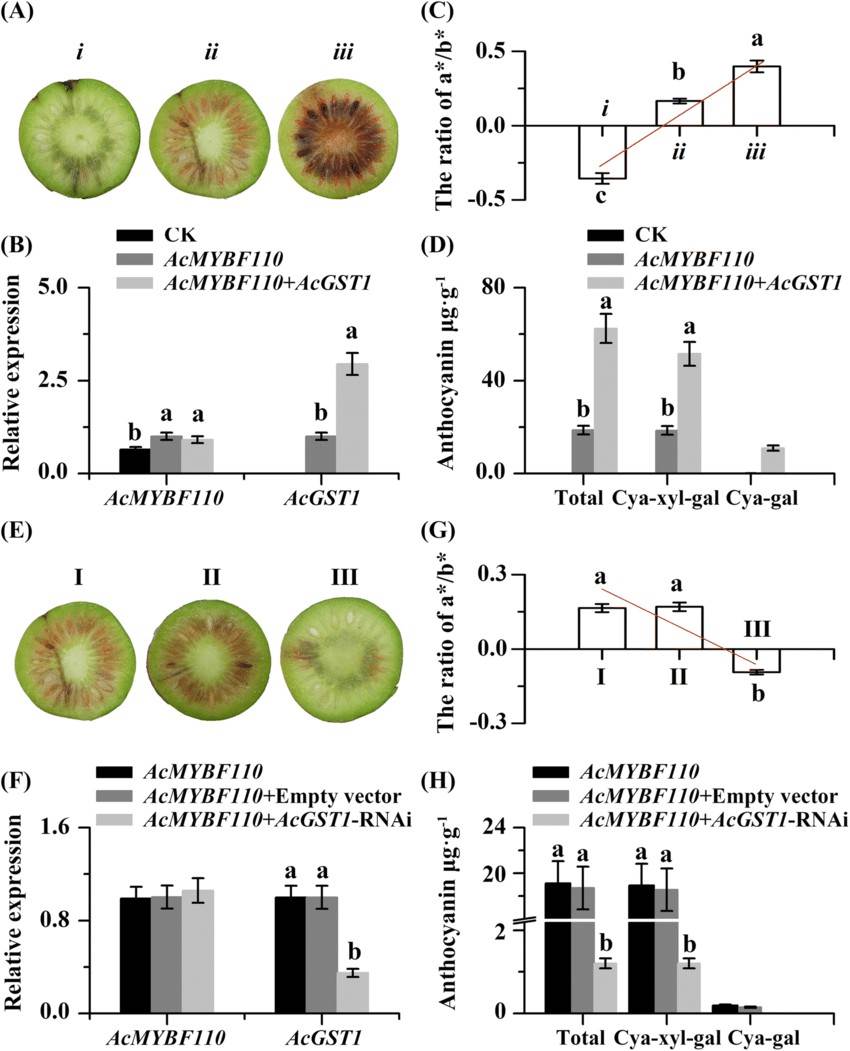Actinidia deliciosa, known as kiwifruit, is a dioecious woody fruiting species. Compared to conventional fruits, kiwifruit fruits are rich in vitamins, mineral salts, and fiber. In addition, kiwifruit has been reported as a medicinal plant because of its tonic and pain-relieving properties and the presence of compounds with potential anticancer activity. Actinidia deliciosa has attracted a great deal of attention in the agri-food industry because of its high nutritional value and medicinal properties. In China, the country of origin of kiwifruit, research on this plant has been increasing since 1980, and breeding programs are evolving to develop new varieties from existing germplasm. Genetic heterogeneity and long life cycles have been barriers to the genetic improvement of Actinidia deliciosa through crossbreeding. Therefore, introducing agronomically important traits through DNA transformation provides an alternative approach.
 Fig. 1. Transient transformation assays of AcGST1 in kiwifruit. (Liu Y, et al, 2019)
Fig. 1. Transient transformation assays of AcGST1 in kiwifruit. (Liu Y, et al, 2019)
Lifeasible is an industry leader in plant genetic transformation and is proud to offer cutting-edge genetic transformation services for Actinidia deliciosa. Our state-of-the-art technology and expertise allow us to introduce novel genes into Actinidia deliciosa, developing superior genotypes with enhanced traits.
We offer Agrobacterium-mediated transformation and regeneration for Actinidia deliciosa, covering various key steps including:
Lifeasible offers state-of-the-art genetic transformation services for Actinidia deliciosa, providing growers and breeders with the tools to unlock the full potential of this extraordinary fruit. We aim to develop transgenic Actinidia deliciosa with enhanced traits, including improved resistance, fruit quality, and environmental adaptation. If you are interested in our solutions, please contact us for technical consultation and quotation.
Reference: